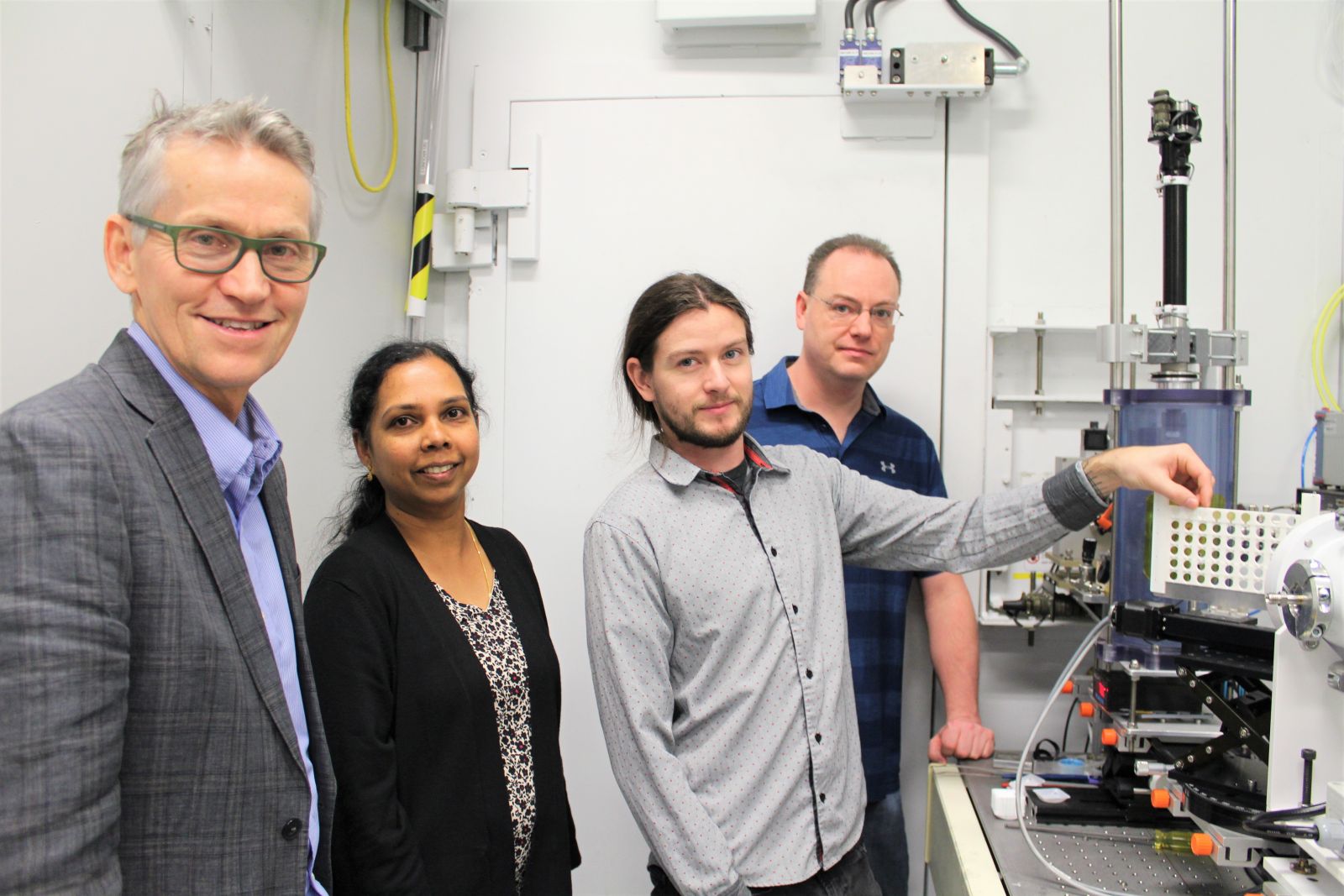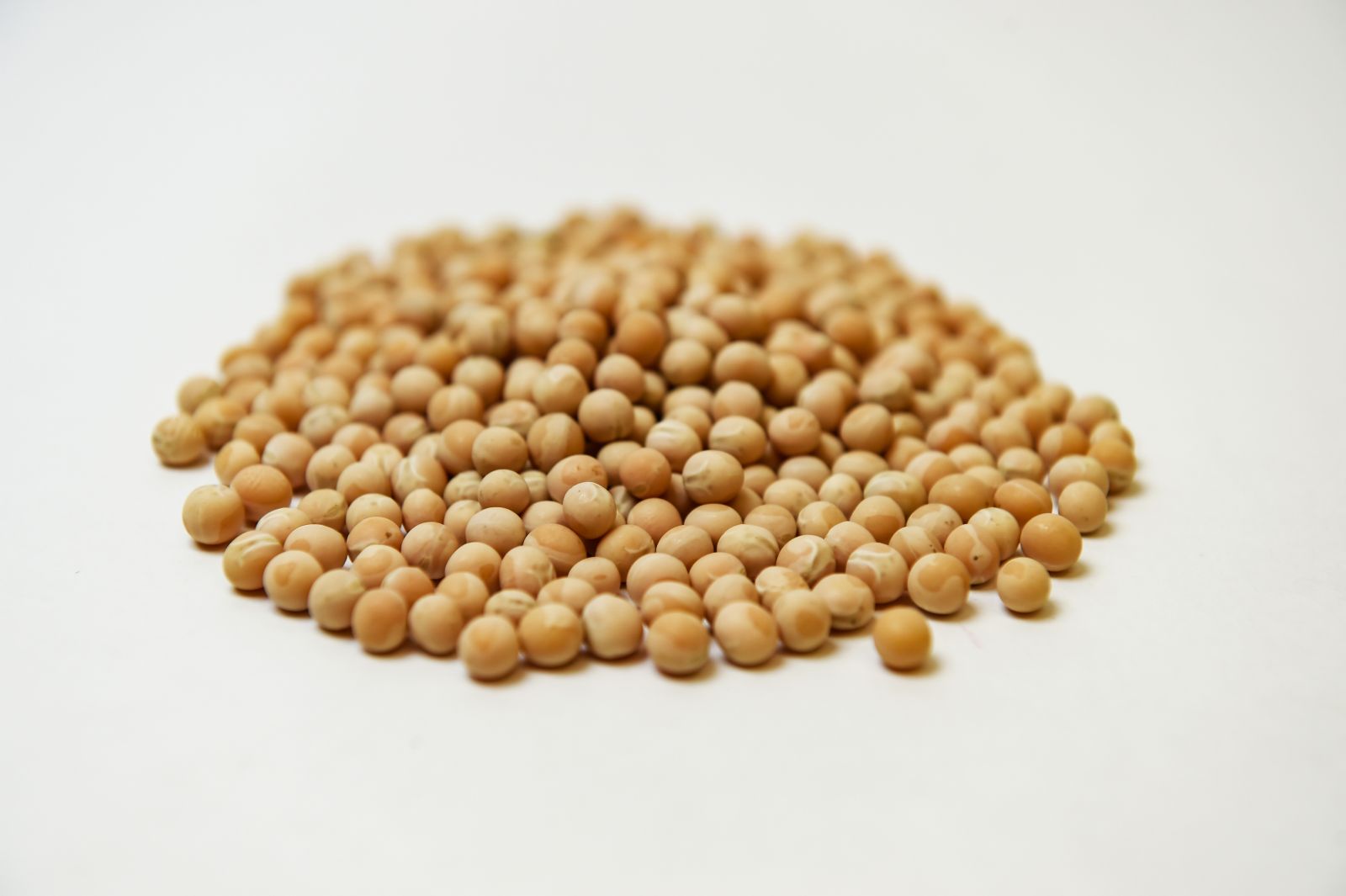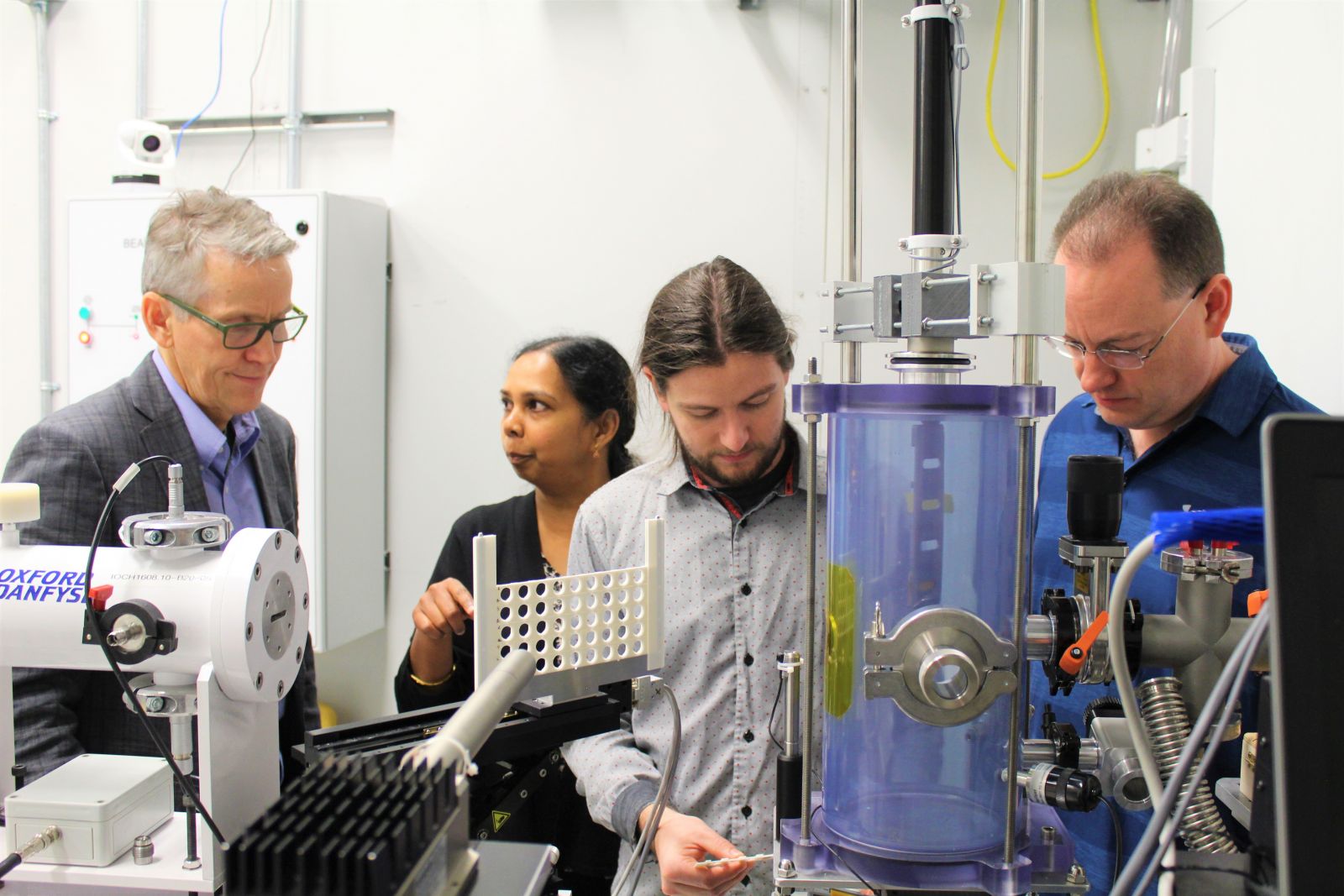Developing more nutritious crops to feed a growing world
Using synchrotron light to analyze new varieties of peas could be faster, more environmentally friendly, and help to nourish underfed populations around the world.
By Colleen MacPhersonYellow peas.

With thousands of seed samples produced every growing season, Dr. Tom Warkentin needs fast, accurate and cost-effective techniques to assess the nutritional value of the pea varieties he has developed. Now, thanks to two recent studies, techniques available at the Canadian Light Source (CLS) synchrotron at the University of Saskatchewan show promise for Warkentin and many other plant breeders.
“These studies arose from the question, ‘Can we use the synchrotron to measure the nutrient traits in pea seeds?,’” explained Warkentin, professor of plant science and pulse breeder in the Crop Development Centre at the University of Saskatchewan’s College of Agriculture and Bioresources. “Improving the nutritional value of peas is a higher and higher priority for us in plant breeding so we wanted to look at the standard approaches we’ve been using to measure nutritional traits versus the techniques available at the CLS.”
Quickly determining the levels of protein, starch, micronutrients and other elements enables breeders to select lines that provide the highest levels of dietary minerals for humans and offers a potential solution to mineral deficiency in many parts of the world. Warkentin added pea protein has been “in the news” lately as it is the main ingredient in protein-based meat alternative foods “so the nutritional profiles are important for companies that want to use peas.”

One of the studies, published online in Crop Science, evaluated X-Ray Florescence (XRF) spectroscopy against widely-used atomic absorption spectroscopy to profile peas, a crop that is a rich source of protein, complex carbohydrates, fiber, B vitamins and a range of minerals including iron, zinc and magnesium. A similar comparison was done using Fourier transform mid-infrared (FT-MIR) spectroscopy and conventional wet chemistry methods, also on pea seeds. Those results are published in the Journal of Food Chemistry.
Warkentin described both studies as proof-of-concept research, and both indicated a comparable level of accuracy between CLS techniques and other assessment methods, with some advantages for synchrotron XRF and FT-MIR. An important advantage is the small sample size required for the synchrotron methods; new breeding lines often have very limited quantities of available seeds. In both studies, the seeds were ground into a fine powder and pressed into thin wafers for analysis whereas conventional methods often involve the addition of chemicals, making sample preparation tedious, time consuming and potentially environmentally unfriendly.
Additionally, XRF and FT-MIR “can measure a large number of traits of interest simultaneously and quite quickly,” he said.

Dr. Chithra Karunakaran, Environmental and Earth Sciences Manager at the CLS and co-author on both studies, said an additional benefit of the synchrotron techniques is “they work just as well no matter what the sample is—seeds, leaves, tissue or roots.” And, there is no need to change the testing protocol for different crops.
Warkentin said he expects tweaks to the testing protocol will improve the speed of data collection but, as it is, “I think any other plant breeder would see this as an interesting option.”
In their paper, the scientists describe the need to deliver more nutritious crops to developing countries with undernourished populations and to Western countries for healthier diets. Saskatchewan is uniquely well set-up to address these issues.
The province is home to Canada’s only synchrotron and is a major exporter of field peas to many other countries, including India, China and Bangladesh. As a result, Saskatchewan could help to develop more nutritious crops and send them to the people who need them across the world.
This story was shared on October 16, 2019 in honour of World Food Day. On this day, organizations promote worldwide awareness and action for those who suffer from hunger and for the need to ensure healthy diets for all. Find out more.
Bamrah, Ramandeep K., Perumal Vijayan, Chithra Karunakaran, David Muir, Emil Hallin, Jarvis Stobbs, Barry Goetz, Michael Nickerson, Karen Tanino, and Thomas D. Warkentin. "Evaluation of X-Ray Fluorescence Spectroscopy as a Tool for Nutrient Analysis of Pea Seeds." Crop Science (2019). https://doi.org/10.2135/cropsci2019.01.0004
For more information, contact:
Victoria Schramm
Communications Coordinator
Canadian Light Source
306-657-3516
victoria.schramm@lightsource.ca
